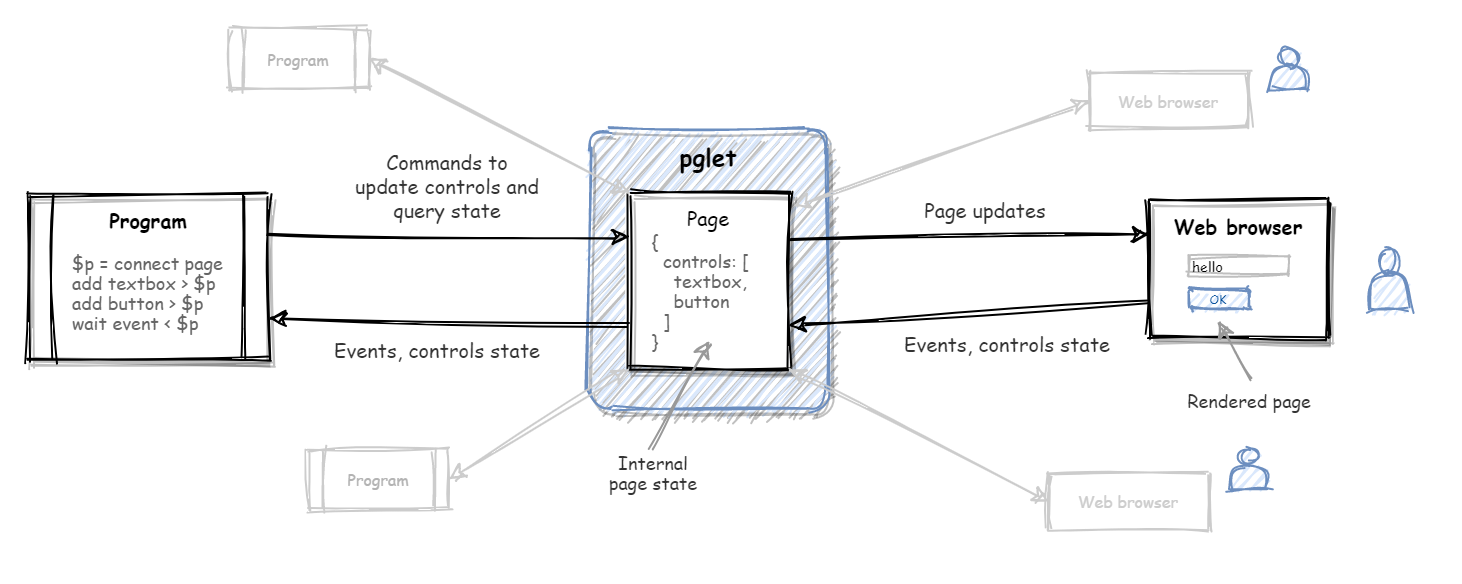How Pglet works
Pglet UI does not become embedded into your program, but is being served by an out-of-process Pglet server. Application state and control flow logic lives in your persistent-process program while UI changes and events are communicated to Pglet server via IPC-based protocol. It allows writing web app as a standalone monolith without any knowledge of request/response model, routing, templating or state management. Pglet server can be run locally, self-hosted in your local network or used as a hosted service.
In a classic client-server architecture front-end communicates to a one or more back-end services. Pglet implements an opposite approach where multiple back-end services scattered across internal network behind a firewall and communicate to a centralized Pglet web server, i.e. front-end service, installed in DMZ or hosted as a service.

This design gives a number of advantages:
- Secure by design - your internal services and critical data stay behind the firewall and not accessible from the outside world.
- Apps running next to services and data they process - faster/cheaper access and maximum security.
- Zero deployment - run apps on any server in your network or your development machine, no need to deploy apps to a web server.